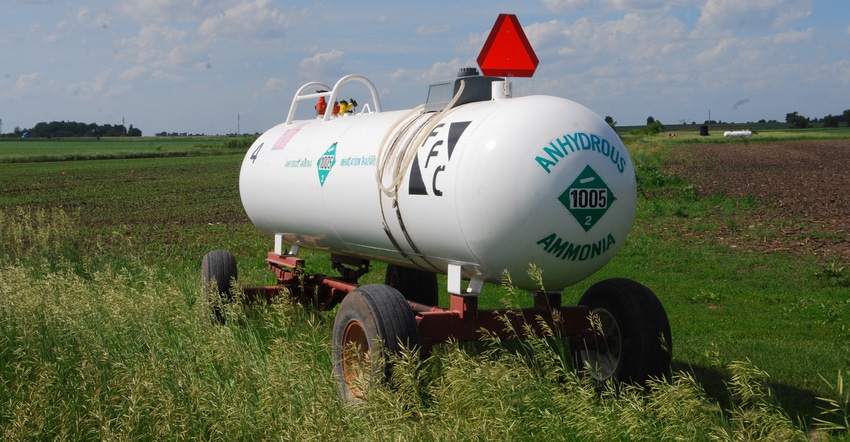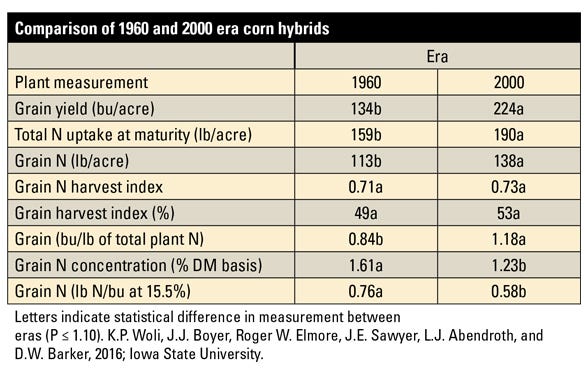February 20, 2018

By Joel DeJong
We usually cannot harvest the corn yields we do in Iowa without adding additional nitrogen as manure or fertilizer for the crop. An exception would be first-year corn following established alfalfa. Corn growers get an excellent return on their nitrogen purchase investment. However, nitrogen application does have a negative environmental impact.
For example, increasing the nitrogen rate applied per acre increases nitrate-N loss through drainage water. I believe the goal of producers should be to apply a rate of nitrogen that maximizes economic return, but also limits the environmental impact. Variable weather conditions do make management of this nutrient a challenge.
Recently, I had a discussion with an agronomic adviser in my region about what rates of nitrogen they recommended to their clients, and how they determined the amount to apply. The basis for his recommendations was a factor times the yield expected, less any legume credits.
What he quoted to me was what ISU recommended over 35 years ago. We quit using that recommendation about 20 years ago. Why? Iowa nitrogen response research very clearly showed there wasn’t a correlation between the yield of fields and the optimum nitrogen rate needed to be most economically profitable. Research from other Midwest states showed the same result.
Today's hybrids use N more efficiently
Even more interesting, although yields have increased dramatically over time, the optimum amount of nitrogen needed per acre hasn’t really changed much.
ISU nitrogen fertilization rate guidelines can now be found on the Iowa Nitrogen Rate Calculator website, which uses data from hundreds of nitrogen rate trials to develop, what I refer to as, a chart of the “odds for N response.”

Much progress has been made in corn yield improvement over time. It is helpful from an economic and environmental standpoint that higher N applications have not been needed for yield improvements.

Data over many years and locations can give us a better handle of what we can expect over time. I encourage everyone to spend some time learning about the data included, look at all the charts, and read the ISU Extension and Outreach publication titled Nitrogen Use in Iowa Corn Production.
Need for nitrogen stays steady
From the 1960s to the 2000s, corn yield went up 100%. Nitrogen fertilizer requirements stayed quite constant over that time. It seems logical that a much higher fertilizer N application rate would be needed, but that hasn’t proven to be true.
At some of the ISU Extension Crop Advantage meetings held across Iowa in early 2018, John Sawyer, ISU Extension soil fertility specialist, discussed the topic of “Nitrogen Use: It’s Not your Grandfather’s Corn.” He focused on a two-year study looking at common hybrids from each decade from the 1960s to the 2000s planted at the same time.
In that study, yields were up 67%. However, when analyzing the amount of N in the grain harvested from an acre, only 22% more N was found in that grain. When the corn grain was analyzed from 1960-era hybrids, there was 0.76 pound of N per bushel. That number dropped to 0.58 pound per bushel in 2000-era hybrids. Several studies conducted of hybrids that are more recent would show that the N amount per bushel has dropped to about 0.53 pound of nitrogen per bushel.
Application rate vs. improved corn yield
It appears that part of the reason we haven’t needed to increase fertilizer nitrogen application rates at the same pace yield has increased is because the nutrient concentration in corn (vegetation and grain) today is different than it was many years ago.
In fact, the amount of nitrogen to apply as indicated by the Corn N Rate Calculator would still be more than what we are removing in the grain, even at very high yield levels. That’s why corn nitrogen response research needs to continue annually, with results added to those already present in the N rate calculator, while dropping older results from the data set.
It’s obvious that corn yield has made great improvement over time. It’s good for the pocketbook and the environment that higher N applications have not been needed to allow these yield increases. Unfortunately, nitrate-N movement to water systems seems to have remained similar over time, too.
In the proceedings for the Crop Advantage Series this year, Sawyer stated: “Increasing N applications in reaction to high corn yields would only reduce profitability and worsen environmental issues.”
Recent research shows that to indeed be true. Monitoring N rate responses in corn needs to continue to see if this changes over time.
DeJong is an ISU Extension field agronomist in northwest Iowa. Contact him at [email protected].
You May Also Like




